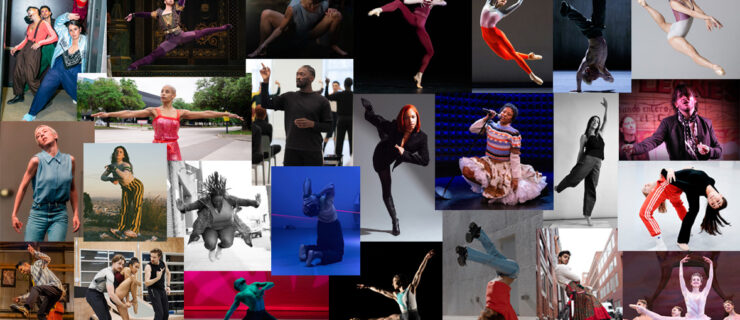Six Strategies To Score A Perfect Ten
In competition, even one point can mean the difference between a national title and a second-place finish. The teams who walk away champions seem to do it time and time again. So what do these squads possess to stay on top year after year? It’s no secret—they wow the judges!
Want to know what goes through the minds of the judges for those three minutes you’re on the floor? These insider tips will help you understand what it takes to be #1.
STUNTS
To score high: “The greatest factor in gaining the most points in the stunt category is finding that critical point where a squad is doing the most difficult and visual stunts its members can perform while still using excellent technique,” says Jim Lord, executive director for the American Association of Cheerleading Coaches and Advisors (AACCA). “There should be as little lag time between stunts as possible and creative transitions are extremely important.” Difficulty alone does not win competitions, he adds. “The stunts must be clean and look effortless. Judges don’t award points just for attempting a stunt,” says Jim. “Squads should look like they’ve performed the skill a hundred times because they should have performed the skill—you guessed it—a hundred times.”
CHEER/CHANT
To score high: The cheer and chant section gives technically strong teams the opportunity to shine. Joyce Whitaker, spirit coordinator for Wright State University in Dayton, OH, has been judging for more than 10 years and says a high score in this category requires great voice projection and clarity, as well as sharp, clean, precise motions and perfect motion placement. “It’s vital that the cheer is not too long or wordy and that the crowd can follow it,” she notes. “The ability to create an atmosphere that makes us want to get out there and cheer with the squad is a must.” Joyce also cites great transitions and creativity, such as the use of signs or megaphones, as judge-pleasers. “Just don’t try to impress us with your stunting here,” she warns. “When squads try to cram too much into a cheer, they lose the cheer itself, and the stunting gets sloppy. Clean, simple stunting and tumbling are what judges are looking for during the cheer.”
DANCE
To score high: Synchronization and precision throughout the entire dance segment are major factors, says Connie Russell, former coach at Trinity Valley Community College in Athens, TX and a judge for 18 years. “Every blink of the eye has to be the same,” she says. “We also want to see difficulty in dance—and we want to see everyone performing the elite skills, not just one or two girls.” Music selection plays into the dance score as well. “We’re looking for great choreography that fits well with the music—and get creative,” adds Connie. “Don’t use the same ‘popular’ music; try to be original.” The dance segment is the time to let your personality shine through, she says, “but don’t overdo it, since this can turn off the judges.”
TUMBLING/JUMPS
To score high: Success in this category depends on difficulty level, technique, synchronization, creative choreography and the ability to balance all these elements in an entertaining way, say Dave and Davonne Hunt, former instructors with a combined total of over 25 years of national judging experience. “We’re looking at the technique of the individuals, as well as the whole squad,” says Dave. “Pointed toes, great extension, good height and correct arm placement are a must and a good judge will catch choreography that attempts to hide poor jumpers. We’re also looking for variety in jumping and tumbling. We don’t want to see the same jump or tumbling pass over and over.” And you can over-tumble, explains Dave. “A squad can throw 16 fulls, but if they’re bad, they’re not helping their score.” The Hunts also warn against using this area to try to overcompensate for a lack of stunting. “We want to see well-balanced routines that have it all. Tumbling is important, but without the other elements, it’s not going to win a competition.”
OVERALL
To score high: The overall effect score can be the most significant category on the judges’ sheet. This score gives the judges’ final impression of the routine, allowing the squad to make up for anything it lacks in the other, more technical, areas. Tracie Zody, a judges’ trainer, says great crowd-leading skills mean a high score. “Teams are getting away from really interacting with the crowd and somehow have become storytellers,” says Tracie. “The main emphasis for cheerleaders is to lead the crowd and that is so necessary for an overall effect. Even all-star teams should be leading the crowd and not just performing.” Tracie also cites “polish” and choreography as high-scoring considerations—how well the routine is put together, the music flow and smooth transitions. “And of course, a major aspect of this category is showmanship,” says Tracie. “It’s important to wow the audience, without going overboard in the process.”
INFRACTIONS
To stay out of trouble: The advice here is simple—know the rules. Read up on what is and is not allowed. If you are the least bit unsure about a stunt you’re performing, ASK! Call the company hosting the competition to request a copy of the rules and study them carefully. Go over each section of the routine to make sure every transition and stunt sequence complies. Know the time requirement, the maximum length of the music segment and any other specifics. Do this before each competition, as some rules vary by company and location.
A Better Idea?
For the upcoming competition season, Jim Thorp, president of the American Championships in Gainesville, FL, is instituting an innovative method of scoring large events. While squads will still receive one overall score, category scoring will not appear on the score sheets, which are being replaced by what the company calls “summary sheets”—instead, each judge will jot down a squad’s routine in shorthand to help him or her remember exactly what each team’s performance entailed. The judges will be allowed to keep the summary sheets until the end of the entire division in order to compare teams more efficiently. Judges also will no longer offer comment on the score sheets, as this will be replaced by expert critique tapes which will provide feedback and be distributed to the squads after competition, a practice already followed by many companies.
“I believe judging has gotten away from the point, which is placing teams in the correct order,” Jim says. “The most important thing is to give judges the best opportunity to compare squads. Our goal is to give judges the ability to focus 100% of their energy on placing teams correctly.”
| SAMPLE SCORE SHEET | TEAM__________________________ | |
| DIVISION______________________ | ||
| JUDGE#___________ | INITIALS___________ | |
| SCORE | ||
|
STUNTS clean, difficulty, falls |
20 | _______ |
|
CHEER/CHANT stunting, sharp, crowd involvement |
20 | _______ |
|
DANCE sync, originality, appeal |
20 | _______ |
|
TUMBLING/JUMPS difficulty, execution |
20 | _______ |
|
OVERALL enthusiasm, appeal |
20 | _______ |
| TOTAL | _______ | |
|
PENALTIES out of bounds (5 points/judge) |
_______ |
|
| illegal stunt (10 points/judge) | _______ | |
| -PENALTIES | _______ | |
| SCORE | _______ | |
| COMMENTS: | ||
|
____________________________________________________________________________ ____________________________________________________________________________ ____________________________________________________________________________ ____________________________________________________________________________ |
||



